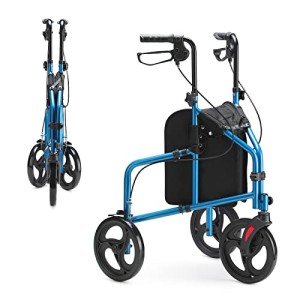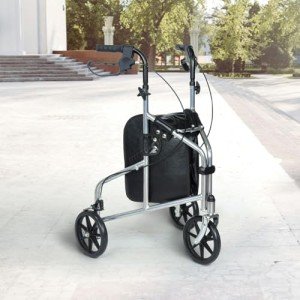Rollators are mobility aids designed to assist people with walking difficulties while promoting self-reliance and safety. Unlike traditional walkers, rollators come geared up with wheels for uncomplicated navigation, making them a vital tool for numerous elderly and disabled people. Among the crucial features that enhance the functionality of rollators is storage. This article checks out rollators with integrated storage choices, highlighting their benefits, types, and important considerations when choosing the best model.

A Pepe 4-Wheel Rollator Walker with Seat is a wheeled walker that provides support for individuals who may fight with balance or endurance. Normally, rollators are created with the following features:

The addition of storage alternatives in rollators brings numerous benefits:
Several kinds of rollators come geared up with storage options:
| Rollator Type | Description | Ideal for |
|---|---|---|
| Standard Rollator | Normally features 4 wheels and a sturdy frame. Storage choices, like a built-in bag or basket, are typically included. | General use, outdoors |
| Compact Rollator | A smaller variation that folds quickly for transport. While these designs typically have restricted storage, many still consist of very little performance. | Tourists and tight areas |
| Sturdy Rollator With Brakes | Developed for larger people, these rollators frequently have better storage capability. | Bigger users, stability needs |
| Rollator with Seat | Features a built-in seat for resting. Storage options vary, often consisting of baskets or shopping bags. | Those needing routine breaks |
| Walker-Carrier Combo | Acts as both a rollator and a lightweight cart, suitable for shopping trips. | Grocery shopping, outdoor use |
When picking a rollator with storage, a number of elements need to be considered to guarantee that it meets private needs.
To ensure durability and ideal efficiency, regular upkeep is necessary. Users need to consider the following practices:
Choosing the best size includes evaluating your height and weight, in addition to checking manage height adjustments to make sure that it is ideal for your stature.
Yes, some rollators are designed with larger wheels and shock-absorbing systems that make them preferable for uneven terrain. It's necessary to examine the specifications.
Most modern rollators are designed to be easily foldable. Search for directions in the user handbook that accompany your picked design.
The majority of basic rollators support in between 250 to 350 pounds; however, durable models can support higher weights.
Yes, many rollators featured the choice of adding devices like cup holders, trays, and bags to enhance performance.
In summary, a rollator with storage is an important mobility aid that empowers individuals while providing them with the convenience of transporting important items. By understanding the various types, essential features, and maintenance requirements, users can with confidence select the Best Folding Three-Wheel Rollator Walker with Accessories Rollator For Walking that fits their lifestyle, promoting self-reliance and convenience in everyday activities. As mobility aids continue to progress, they become progressively necessary for improving the quality of life for elderly and disabled individuals.
No Data Found!
